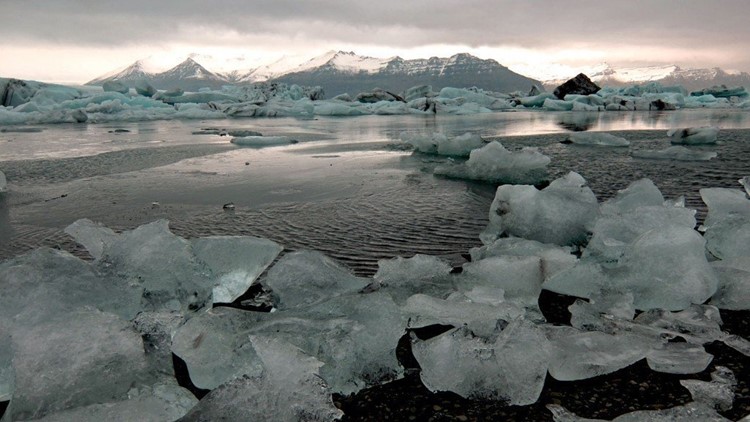In the Arctic, a changing climate isn’t something that might happen in the near future. In the uppermost stretches of the Northern Hemisphere, it’s already happening now.
Temperatures are warming; sea ice is retreating.
And a new study says permafrost is melting so fast in the Arctic that it’s not only ripping up the landscape, but it’s also wrecking scientific equipment and making climate change even worse for all of us.
It releases gases and changes the landscape
As permafrost — ground that is frozen year-round — melts, it releases carbon and greenhouse gases into the atmosphere. Current modeling for this is based on an expectation that permafost thaws slowly, thus carbon would be released into the atmosphere at a certain rate. But this new study published last week in the journal Nature says since some Arctic permafrost is melting much more quickly, higher amounts of greenhouse gases and carbon could be released as well. That would warm the planet up more quickly.
Scientists at this point just don’t know what all the consequences of such permafrost-induced carbon release could be, though in the study researchers estimate it could produce twice as much gas than what current models are predicting.
Rapid permafrost melt isn’t just releasing more greenhouse gases into air: It’s changing the landscape, too, since permafrost affects about a quarter of the land in the Northern Hemisphere.
The group of scientists who conducted the study talked of research sites in Alaska, now covered with lakes, that a year ago were a forest. And they also saw rivers filled with sediment that once flowed clear. All of these abrupt changes to the land made it more difficult for them to conduct research, since the scientific equipment they depend on was sometimes literally swallowed up by the land.
It put scientific equipment under water
“We now know that ice-rich permafrost covers about 20% of the permafrost region, and in these ecosystems, the permafrost is literally the glue that holds the land together. When it thaws, the land liquefies,” Merritt Turetsky, an ecologist at the University of Guelph in Ontario and the study’s lead researcher, told CNN. “In flat areas, before the permafrost thaws, ecosystems are dry enough to be forested. When the permafrost thaws, all the trees die, topple over, and the whole system flips to a lake. I have been monitoring permafrost temperature in interior Alaska for the past 10 years (outside Fairbanks), and we returned to our field sites only to find all our gauges and equipment totally under water. You can imagine that the electronics did not survive!”
Rick Thoman, a climatologist with the Alaska Center for Climate Assessment and Policy, said he’s seen similar changes in his state.
“Anything built on permafrost (like roads) will be affected,” Thoman told CNN. “You can see it on the natural landscape as well.”
Because of the possible changed working conditions brought on by the permafrost melt, scientists working in the Arctic will need to develop new strategies and get more creative as they conduct research there, Turetsky said.
A thawing Arctic will contribute a lot more carbon to the atmosphere, she added, estimating it could be like the world absorbing the emissions of two more large countries.
It’s not too late to do something about it
Since scientists still don’t fully know how all of this rapid melting will affect the environment, the study’s researchers made a number of recommendations to help find out, including:
- Improve the tracking of permafrost regions across the Arctic by using drones and lasers in surveying the land;
- Increase funding for monitoring sites, especially in waterways;
- Increase the number of observatories and experiments in the area so that more data can be gathered;
- Improve reports, so that policymakers can get the best current estimates of the effects of permafrost melt on climate change.
Thoman, the Alaska climatologist, also noted that the most visible examples of climate change in his state could be seen in parts of western and northern Alaska. Those are vast, remote stretches of land which contain what he called “vulnerable communities” of people, many of them indigenous to the area and poor.
“The impacts are disproportionally borne by the people least equipped to deal with it,” he said.
Despite the dramatic landscape changes seen already, Thoman said it’s not too late to reverse the tide.
“Environmental change is entirely obvious and is well on the way. Some of that is baked into the system from the added heat of the oceans,” he said. “I wouldn’t say it’s too late. It’s never too late to do something. People are increasingly understanding that things aren’t going back to the way they were. We have to adapt.”



